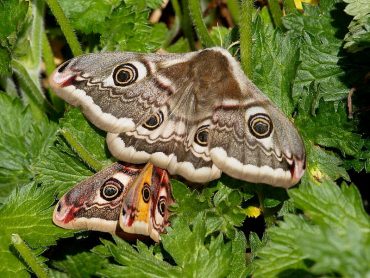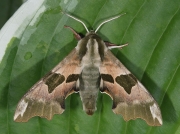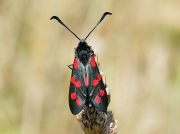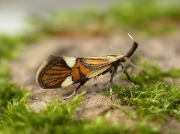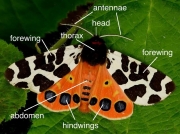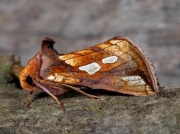Grass Eggar Moth – Lasiocampa trifolii.
The Grass Eggar Moth is a nationally scarce species in the British Isles, being found only in a few, mainly coastal areas, of Southern England and Wales, the Isles of Scilly and the Channel Isles, as well as a few sites in Cheshire and Cumbria.
The species flies in a single generation between August and September when it’s attracted to light.
In South West Cornwall it occurs on coastal clifftop sites on The Lizard, in the large sand dune systems of the North coast and on sites near Lands End.
In Europe the Grass Eggar Moth is more widespread.
Identification of the Grass Eggar Moth
The females are larger than the males having a forewing of up to 30 mm compared to 20-25 mm.
Males have pectinated antennae used to detect the pheromones give off by freshly emerged females.
Commonly the wings are a reddy/brown but regionally darker and lighter variations occur. The Pale Grass Eggar, Lasiocampa trifilii f.flava. is a light yellowish/brown form.
Other moths are featured in the species pages and moth galleries
The distinctive white spot in the centre of the wings and curved outer cross line help determine from the smaller Lackey which is commonly found in the same habitat.
The Oak Eggar Moth also has a distinctive white central mark but is larger.
Butterflies are featured in the British butterfly species pages and galleries.
Butterflies are featured in the European Butterfly galleries.
Grass Eggar caterpillar – Lasiocampa trifolii
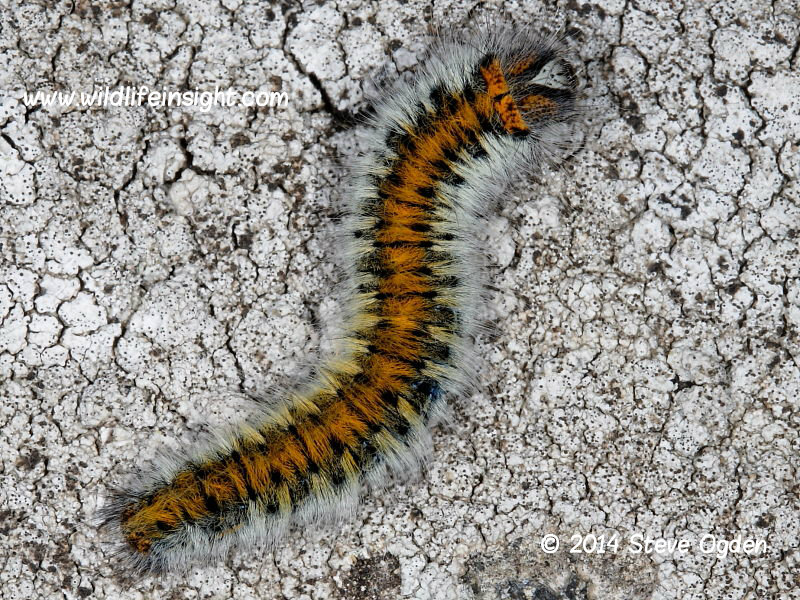
The fully grown Grass Eggar caterpillar is up to 65 mm in length.
The body is heavily coated in hairs which vary in colour from ruddy brown to pale yellow crossed by black segment divisions. On either side is a thick apron of white, grey or pale yellow hairs skirting the body.
Other hairy caterpillars are featured in the Hairy caterpillar gallery
Other moth caterpillars are featured in moth caterpillar galleries
Butterfly caterpillars are featured in butterfly caterpillar galleries
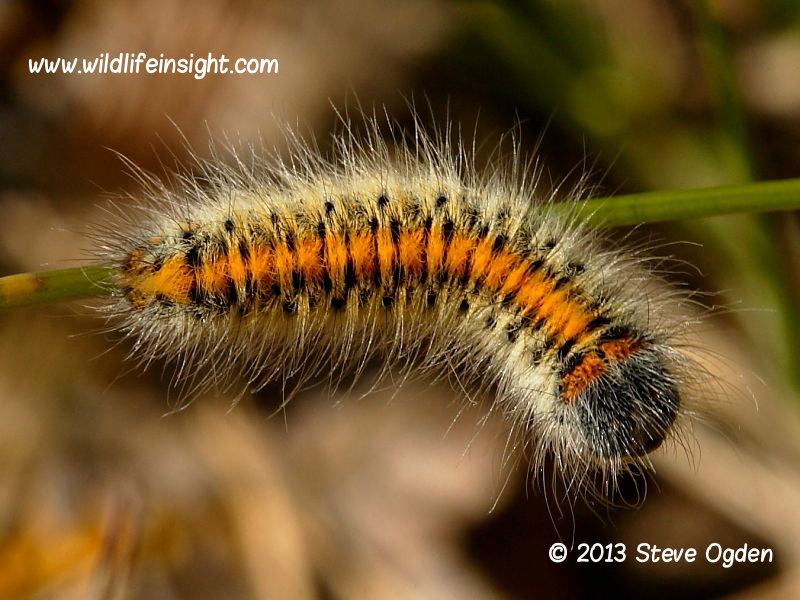
The females lay eggs amongst the larval foodplant – a wide variety of plants including heather, bird’s-foot trefoil, thrift, False Oat-grass, creeping willow and bramble.
The eggs overwinter before hatching the following Spring.
By mid June the larvae are up to 65 mm in length and fully grown.
Nearing pupation they may often be seen basking in the sun on low growing vegetation.
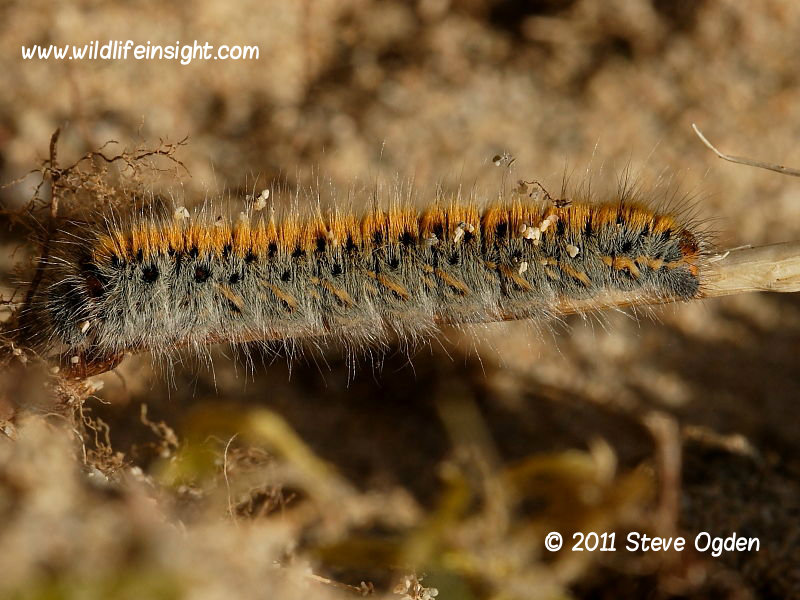
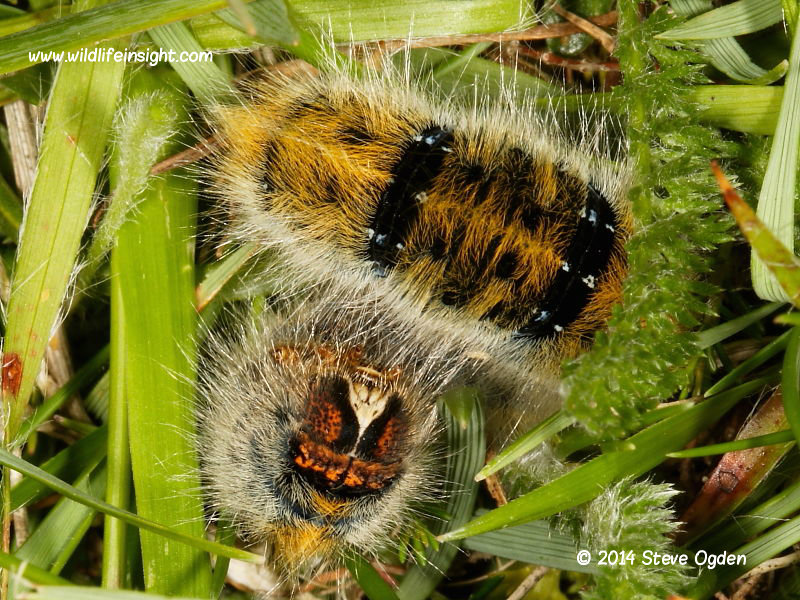
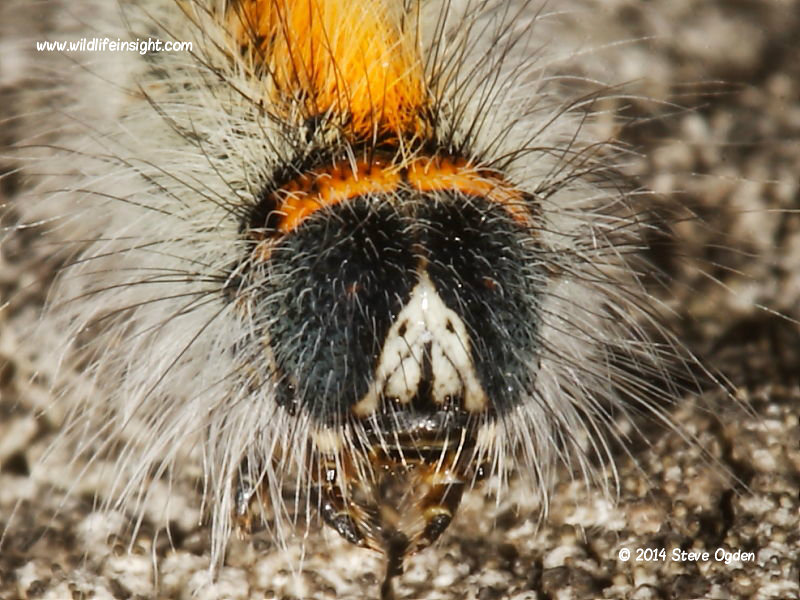
The bright yellow form of Grass Eggar caterpillar featured was recorded on the Scilly Isles by Chris Hopkins.
This fully grown and extended caterpillar clearly shows the distinctive black bands and thick, pale collar of hairs.
The fully grown Oak Eggar caterpillar may also be found in the same coastal habitat and is sometimes confused with the Grass Eggar. Both have a liking for basking on rocks, low growing plants and paths.
Pupating Grass Eggar caterpillar
The caterpillars pupate inside a cocoon loosely woven amongst the base of grass stems.
Grass Eggar moths emerge in 30 – 40 days.
Recommended reference books
The Colour Identification Guide to Caterpillars of the British Isles – Jim Porter.
Field Guide to the Moths of Great Britain and Ireland – Waring, Townsend and Lewington.
Moths of the British Isles – Bernard Skinnner.
The Provisional Atlas of UK’s Larger moths -Randle, Fox and Parsons
